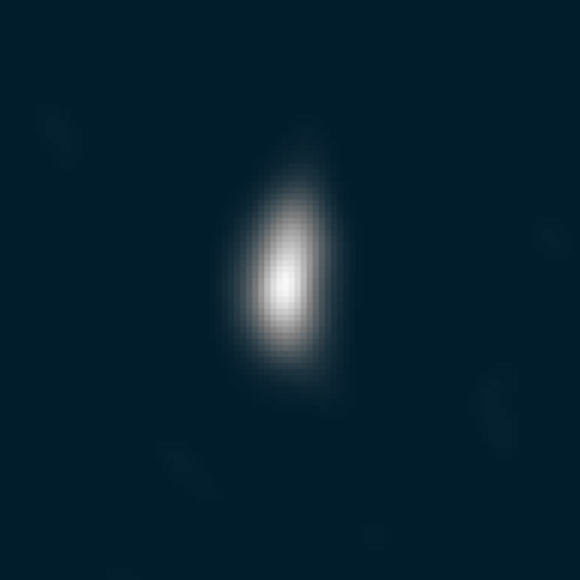After a journey of 13 years and 4 billion miles (6.4 billion km), NASA’s New Horizons probe had a close encounter with a Kuiper Belt object known as Ultima Thule at 12:33 a.m. EST (5:33 a.m. GMT) January 1, 2019, closing to a distance of about 2,200 miles (3,500 km) from the object.

Just over 24 hours before its closest approach to Ultima Thule, New Horizons has sent back the first images that begin to reveal Ultima Thule’s shape. Image-sharpening techniques combining multiple images show that Ultima Thule is elongated, perhaps twice as long as it is wide. The spacecraft was approximately 1.2 million miles (1.9 million km) from Ultima Thule when this image was taken on December 30, 2018. Image credit: NASA / Johns Hopkins University Applied Physics Laboratory / Southwest Research Institute.
From New Horizons’ location, a radio transmission traveling at light speed requires just over six hours to reach Earth.
The spacecraft wasn’t in contact with Earth during close approach but was programmed to send a signal home on the morning of January 1, 2019, to indicate its health and whether it recorded all the expected data.
The mission team members expect the data to be returned over the next 20 months, with an additional year of data analysis and archiving.
“This flyby is the culmination of years of careful planning and hard work, and we can’t wait to transform Ultima Thule into a real world,” said New Horizons project manager Dr. Helene Winters, from the Johns Hopkins University Applied Physics Laboratory.
“Ultima Thule remains an enigma to us, but the final countdown has begun,” said New Horizons principal investigator Dr. Alan Stern, of the Southwest Research Institute.
“What we’ll very soon learn about this primordial building block of our Solar System will exponentially expand our knowledge of this relatively unknown third region of space.”
“I think it is fitting that this Ultima Thule flyby is at the interface of the 60th anniversary of Explorer 1 in 2018 and the 50th of Apollo 11 in 2019,” said Dr. Thomas Zurbuchen, associate administrator for the Science Mission Directorate at NASA Headquarters in Washington.
“To me, this milestone of New Horizons is full of everything NASA and NASA Science is all about.”
“It is about boundless aspiration and hope that are at the inception of exploration. It is about innovation and perseverance to actually create the success, by an amazing team that transcends what is reasonably expected or even what seems possible initially.”
“And then, it is about surprise and transformative learning that has been at the heart of NASA and NASA Science and Exploration during the past 5-6 decades. The Ultima Thule flyby has all of these!”







